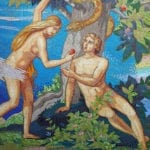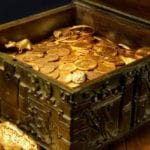 Mysteries
Mysteries  Mysteries
Mysteries  History
History 10 Surprising Stories About the Texas Rangers
 Humans
Humans 10 Philosophers Who Were Driven Mad by Their Own Theories
 Miscellaneous
Miscellaneous 10 Video-Game-Worthy Weapons and Armors from History
 Weird Stuff
Weird Stuff 10 Psychics Who Accurately Predicted Wartime Events
 The Arts
The Arts 10 Pieces of Art Inspired by a Broken Heart
 Health
Health 10 Science Fiction-Sounding New Medical Treatments
 History
History 10 Surprising Facts About the Father of Submarine Warfare
 Space
Space Ten Astonishing New Insights into Alien Worlds
 Weird Stuff
Weird Stuff 10 Bizarre Summer Solstice Rituals Still Practiced Today
 Mysteries
Mysteries Top 10 Haunting Facts About the Ghost Ship MV Alta
 History
History 10 Surprising Stories About the Texas Rangers
 Humans
Humans 10 Philosophers Who Were Driven Mad by Their Own Theories
Who's Behind Listverse?

Jamie Frater
Head Editor
Jamie founded Listverse due to an insatiable desire to share fascinating, obscure, and bizarre facts. He has been a guest speaker on numerous national radio and television stations and is a five time published author.
More About Us Miscellaneous
Miscellaneous 10 Video-Game-Worthy Weapons and Armors from History
 Weird Stuff
Weird Stuff 10 Psychics Who Accurately Predicted Wartime Events
 The Arts
The Arts 10 Pieces of Art Inspired by a Broken Heart
 Health
Health 10 Science Fiction-Sounding New Medical Treatments
 History
History 10 Surprising Facts About the Father of Submarine Warfare
 Space
Space Ten Astonishing New Insights into Alien Worlds
 Weird Stuff
Weird Stuff 10 Bizarre Summer Solstice Rituals Still Practiced Today
10 Objects, Legends, and Locations That Share The Devil’s Name
The Devil has become one of the most well-known figures in religious lore, and as such, many incredible places on Earth have been named after him. Not only that, but historical characters and even objects share his moniker.
If you’re looking for some cool places to visit or want to check out some eerie phenomena supposedly made by the Devil, check out the following ten places and occurrences!
Related: Top 10 Castles And Bridges Supposedly Built By The Devil
10 The Devil’s Sentry Box–San Juan, Puerto Rico
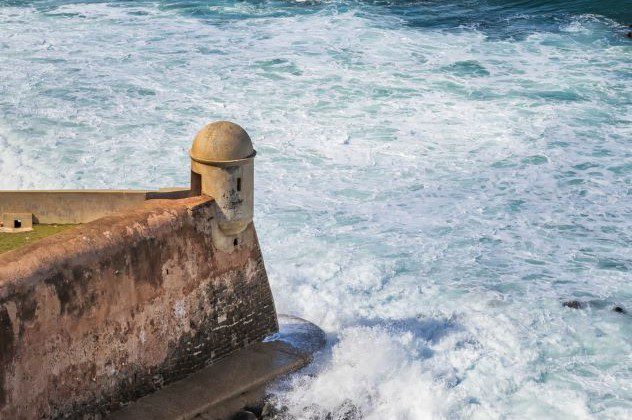
Sitting on one of the northern tips of the Puerto Rican capital, the Castillo San Cristobal is an ancient fortress that was used to guard the island against pirates and for defense during the Spanish-American war. The fort has a centuries-long history, which may include the Devil!
A legend from the 17th century says that a soldier named Sanchez was posted at the isolated Castillo San Cristobal sentry box overnight. He was known for playing his guitar to pass the time, and one night during the roll call, Sanchez didn’t respond when his name was called.
The other soldier called out again and waited for a response, but he heard nothing. He told the night watchmen that Sanchez was missing, but no one saw anything or anyone walking by. They concluded that he’d been taken by something, but they were too afraid to go and look for him in the dark.
The next morning, the soldiers went to Sanchez’s sentry box and found his clothes and rifle but no sign of him. Some of the men said they found his burned clothes and that they could smell sulfur, claiming that the Devil must have taken him.
A few nights later, the soldiers claimed they could hear Sanchez’s guitar playing, but they saw nothing enter or leave the sentry box. By morning, it was still empty, and the sound of guitar strings continued on some nights, along with the sound of a demonic laugh![1]
9 The Devil’s Elbow–Glossop, England
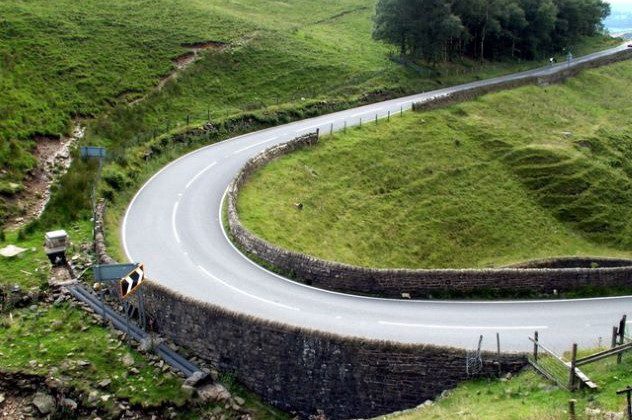
Located between Glossop and Woodhead, England, is a section of the B6105 that’s known as the Devil’s Elbow, so-called because of its sharp curve. It’s also a place that holds a Devil legend.
It’s said that the Devil’s Elbow was the meeting point for a couple, but the woman’s father was against the relationship and said that he’d rather his daughter be taken by the Devil than see the two meet again. Be careful what you wish for, as the saying goes!
When the couple next met up, the Devil suddenly appeared and chased the two of them across the moor. As the Devil attempted to snatch the woman, his bent arm turned into stone, which he then ripped off and threw across the moor, forming a curve in the road.[2]
8 Robert the Devil–Normandy, France
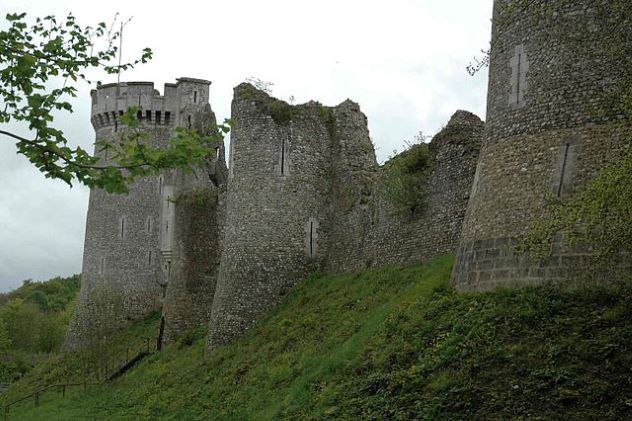
The legend of Robert the Devil comes from either the late 12th century or the early 13th century. It says that during this time, the Duke and Duchess of Normandy were struggling to have a child. They became tired of always praying to God, who didn’t seem to want to help them to have a baby.
Instead, they turned to the Devil and asked him for help, so their son, Robert Le Diable, was born. Unfortunately, since his father was the embodiment of evil, the boy grew up to become cruel and bloodthirsty. So he teamed up with a bunch of brigands to cause havoc, including a crime that took the lives of seven hermits.
He suddenly became aware of how evil he was, and it was then that his mother revealed just how he was born. After trying and failing to persuade his companions to stop doing evil, he kills them and travels to Rome, where the pope sends him to live with a hermit. The hermit tells Robert what he must do to achieve penance, including feigning dumbness and madness and arguing with dogs about food.
He then works incognito as a jester in the emperor’s palace, where he’s secretly helped by an angel. This angel also provides him with armor so he can join the war against the Saracens and save Rome. Finally, the emperor rewards the mysterious hero by giving him a crown and the hand of his daughter in marriage.
Robert rejects his true identity and is delivered from penance, after which he marries the emperor’s daughter. The two return to Normandy, where Robert saves his widowed mother from the clutches of a terrible lord. This is followed by a trip back to Rome in order to avenge his father-in-law’s murder. Supposedly living happily ever after, Robert and his wife then have a son named Richard.[3]
You can visit the remains of the Château de Robert le Diable (Robert the Devil), a French feudal castle from the time of the Dukes of Normandy. Also sometimes referred to as the Château de Moulineaux. It is situated at Moulineaux, near Rouen.
7 The Devil’s Pit–Aukštadvaris, Lithuania
The Devil’s Pit is a deep pit located in Lithuania’s Aukštadvaris Regional Park. It is well known for its ancient and unique history, with the first settlers arriving there as far back as the 2nd and 3rd centuries BC. The Devil’s Pit is shrouded in mystery—even its origins are still unknown.
Legends and speculations about the pit have been passed down through the generations, with no scientific explanations being given yet for its origins. But, there are a few hypotheses of how it came about, including a rock-covered glacier that appeared thousands of years ago. As the glacier melted, it’s said that a huge cavity started to form.
Another theory is that a melting glacier caused a powerful waterfall. After a while, the force of the plummeting water may have caused the deep pit. And, of course, the Devil’s Pit is home to a Devil legend too! It’s said that the Devil had a midnight feast there, and screams can be heard by those who walk by the pit at night.[4]
6 The Devil’s Rocking Chair–Las Vegas, USA
Zak Bagans’s The Haunted Museum is an award-winning museum for all things haunted, creepy, and weird! Bagans himself is a pioneer in the field of the supernatural and has spent his life finding answers about the afterlife through science-based research.
One of the many creepy items on display in The Haunted Museum is a supposedly evil chair called the Devil’s Rocking Chair. Its history and original owner are unknown, but it was acquired by the Glatzel family during the 1950s. Two members of the Glatzel family became possessed by demonic forces, and it all leads back to the rocking chair.
The first possession took place in 1980 when 11-year-old David Glatzel woke up in distress one night, claiming he’d seen a ghostly figure that was part animal and part human, with hooves, horns, and a gaunt face complete with sharp teeth. His mental well-being deteriorated after this incident, and he started seeing this figure, which he referred to as “the beast,” everywhere, including during the daytime.
The beast’s favorite spot was in the rocking chair, and David’s family claimed they saw the chair empty but rocking back and forth on its own. Eventually, they called in a priest to perform an exorcism, but it only angered the spirit. Legendary paranormal investigators Ed and Lorraine Warren were called in next to help, and with the help of other priests, they successfully banished the Devil from David’s body.
Unfortunately, this wasn’t the end for the Glatzels. David’s sister’s fiancee, Arne Johnson, began acting in the same way as David, and they all concluded that the same spirit had entered Arne’s body after being extracted from David. But Arne’s possession was much worse, and he ended up killing his landlord. In court, a defense of demonic possession was given, but this was overlooked, and he served five years in prison.
The rocking chair is still on display at The Haunted Museum, and demonic entities allegedly still surround it. Museum workers claim that strange things started happening when the chair arrived, and patrons are warned to visit at their own risk![5]
5 The Devil’s Fingerprints–Blythburgh, England
On August 4, 1577, the residents of Blythburgh, a village in Suffolk, England, were attending church for Sunday services when a huge storm hit the town and battered the Holy Trinity Church. Lightning struck the church again and again, causing the spire to collapse through the roof onto the congregation below.
It’s said that during the chaos, a huge, shaggy black dog appeared. Known as Black Shuck, or scucca in Old English, meaning “Devil,” the creature descended upon some of the parishioners before disappearing down the center aisle and leaving the church.
The entity left long black scratch marks on the wooden doors, becoming known locally as “The Devil’s Fingerprints,” which are still there to this day. In reality, these marks were probably placed there with a taper or candle, according to researchers and experimental archaeology work. But, in a twist of irony, these marks were likely intended to protect the church against demons and curses instead of being caused by them.[6]
4 The Devil’s Bit–Glenreagh, Ireland
Found in the hills of the County Tipperary countryside, the Devil’s Bit in Glenreagh, Ireland, is a gap between a rock formation and a plateau. The mountaintop looks as though it’s had a chunk bit out of it, which the local legend says was caused by the Devil taking a bite out of the top of the mountain.
The bite broke the Devil’s tooth, and he spat it out, which is said to have formed the Rock of Cashel, a notable landmark located 20 miles (32 kilometers) south. Of course, the gap in the mountaintop is a geological oddity; however, this corner of the world is full of myths.
One of these myths claims that in 1789, an 8th-century edition of the four Gospels called the Book of Dimma was found close to the Devil’s Bit. It’s not known for sure whether the document would have survived the conditions there, but the alleged discovery shows how intriguing this place is.[7]
3 The Devil’s Claw Marks–Island of Sanday, Scotland
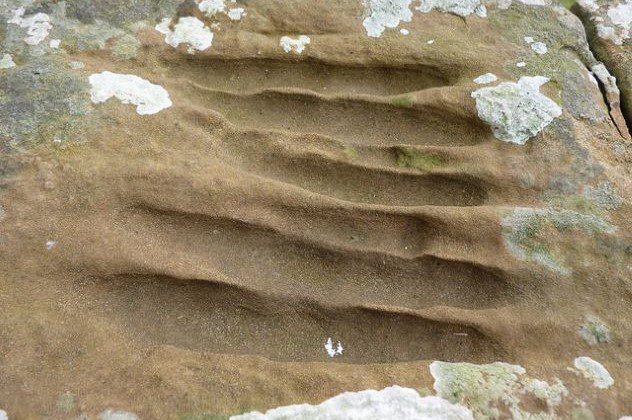
On the island of Sanday in Scotland sits the Lady Village. The parish church is just a roofless ruin now, but you can still visit and climb the stone steps that originally led to the upper level. As you get to the top, a bizarre sight will greet you—a stone with huge marks as if something with strong claws scratched it!
Legend says that there was a minister in the village preaching about sin, particularly adultery. However, this minister was engaging in the very sins he was preaching against. One night, as he was leaving his mistress’s house, he found the Devil himself waiting to take him to hell.
The minister ran back to the church and managed to shut the door before the Devil could get in, leaving him outside, raging and scratching at the stone. As they say, practice what you preach.[8]
2 The Devil’s Pulpit–Craighat, Scotland
The Finnich Glen in Scotland is home to blood-red water that encircles a bizarre rock with its own sinister legend. The mushroom-shaped rock was given the moniker “The Devil’s Pulpit” and is said to have been the place where the Devil stood when he addressed his followers.
Other myths say that secret meetings were held there by Druids as well as the rock being used as an execution block by witches. The blood-red water gives the glen an ominous feeling, even though the water wasn’t turned red by the Devil—it’s simply a result of the red sandstone underneath.[9]
1 The Devil’s Gate–Wyoming, USA
Created by the Sweetwater River in Natrona County, the Devil’s Gate is a limestone rock passage measuring 1,500 feet (457 meters) in length. In the 1800s, it was used as a landmark by fur traders and westward emigrant trails, including the California, Oregon, and Mormon trails.
The Devil’s Gate might be so-called because it’s thought to be the location of several murders. However, in 1843, a New Orleans reporter suggested that a sinister legend was responsible for the moniker.
It says that a savage beast stopped Native Americans from hunting around the area, so one courageous warrior decided to put a stop to it. He searched for the beast, and it became so angry it used its tusks to tear the passage in the rock and escape.
Thanks to the invention of cars, trains, and airplanes, the trails eventually became obsolete. The land was then bought by a Mormon church, where a public center was opened to provide education about the former passage and the travelers.[10]





